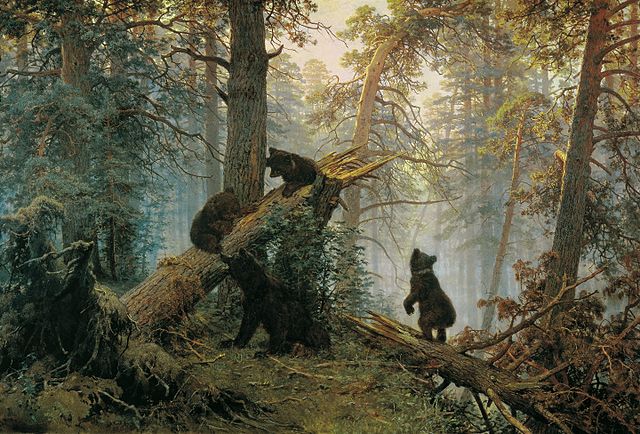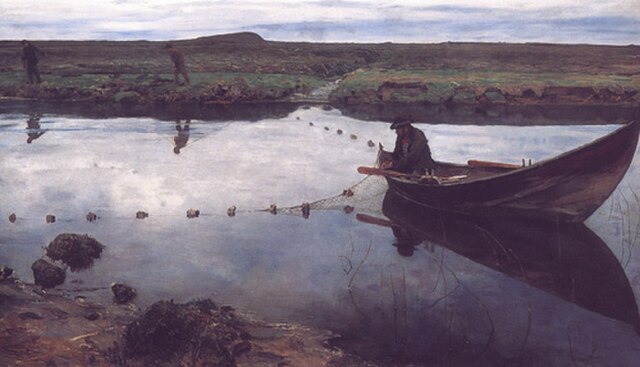Peredvizhniki, often called The Wanderers or The Itinerants in English, were a group of Russian realist artists who formed an artists' cooperative in protest of academic restrictions; it evolved into the Society for Travelling Art Exhibitions in 1870.
Newcomer at School by Emily Shanks
Ilya Repin, Barge Haulers on the Volga, 1870–1873
Ivan Shishkin and Konstantin Savitsky, Morning in a Pine Forest, 1878
Konstantin Savitsky, Repairing the Railroad, 1874
Realism in the arts is generally the attempt to represent subject matter truthfully, without artificiality and avoiding speculative and supernatural elements. The term is often used interchangeably with naturalism, although these terms are not synonymous. Naturalism, as an idea relating to visual representation in Western art, seeks to depict objects with the least possible amount of distortion and is tied to the development of linear perspective and illusionism in Renaissance Europe. Realism, while predicated upon naturalistic representation and a departure from the idealization of earlier academic art, often refers to a specific art historical movement that originated in France in the aftermath of the French Revolution of 1848. With artists like Gustave Courbet capitalizing on the mundane, ugly or sordid, realism was motivated by the renewed interest in the common man and the rise of leftist politics. The realist painters rejected Romanticism, which had come to dominate French literature and art, with roots in the late 18th century.

Bonjour, Monsieur Courbet (1854) – a Realist painting by Gustave Courbet
Francisco Goya, Charles IV of Spain and His Family, 1800–01
Eilif Peterssen, The Salmon Fisher, 1889
Henri Biva, c. 1905–06, Matin à Villeneuve (From Waters Edge), oil on canvas, 151.1 x 125.1 cm








